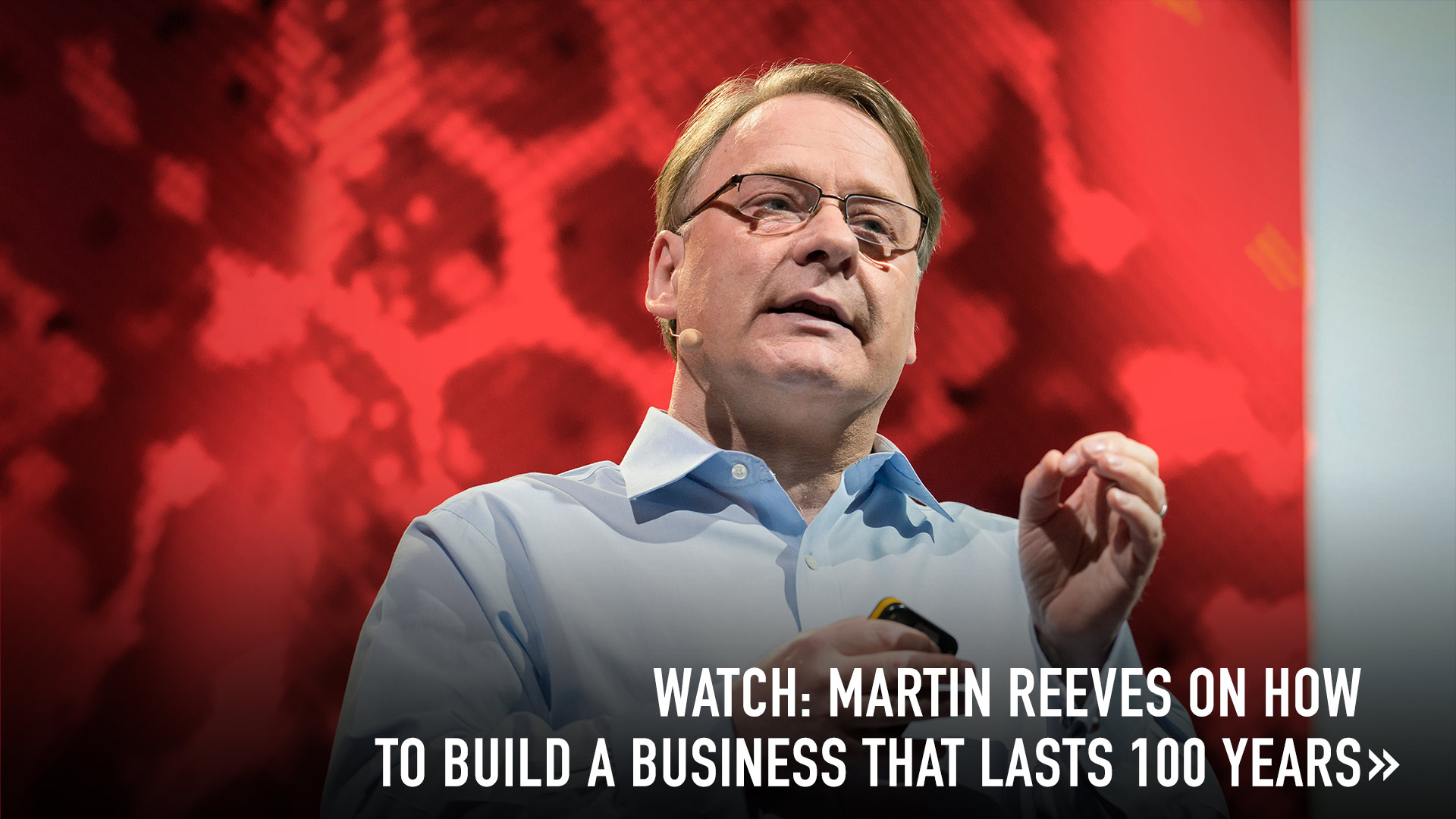
Some people say that creating true innovation is like capturing lightning in a bottle. Not so, says BCG managing director Martin Reeves. It’s actually a process that can be considered, managed and adapted.
Picture this: Three children are given a LEGO set with all the pieces to build a fire department. All of them want to build as many cool new toys as possible. Kid A goes for the easy wins. She puts a tiny red hat on a tiny minifig — presto, a firefighter! — and continuing in this way, she rapidly makes several simple toys. Kid B uses her intuition. She first chooses the pieces she’s drawn to and then thinks about how she might combine them. Kid C takes a different strategy altogether: She picks up pieces she can’t use immediately — like axles, wheels, base plates — but that she knows she’ll need later to build complex toys that will be more fun to play with over time. By the time they’re finished playing, which kid will have created the most new toys?
Conventional wisdom tends to favor Kid B’s intuitive strategy. Most of us tend to regard innovation as a semi-mystical process fueled by some combination of creativity, serendipity, gut instinct and vision. “Innovation has been [seen as] more of an art than a science,” says Martin Reeves (TED Talk: How to build a business that lasts 100 years), senior partner and managing director at consultancy BCG and global director of BCG’s think tank. (BCG partners with TED to host an annual TED Institute event.) “We think it’s dependent on intuition or personality or luck.”
Instead, innovation strategy is entirely possible. “Innovation is an unpredictable process — but one with predictable features,” says Reeves. A new study he led with Thomas Fink from the London Institute of Mathematical Sciences, recently published in MIT Sloan Management Review, show that in fact Kid B’s intuitive approach actually tends to be the least productive. The study’s coauthors ran simulations based on historical data on companies in multiple categories, including culinary arts, music, language and technologies such as those used by Uber, Instagram and Dropbox. And they concluded that companies seeking innovation should emulate Kids A and C — the secret is knowing how and when to use each of their tactics. Here, they share the steps to take.
Choose your competitive space. Think about the services and products that customers need, select the sector you want to break into, and then assess the companies that are already in that area and what they’re selling or providing. Entering what Reeves and Fink refer to as “immature spaces” — sectors with few competitors and few offerings — can be highly profitable. They point to Uber as an example. When Uber began in 2009 as a hired-car service that could be summoned by an app, they write, “the ride-shading industry was immature, product complexity was low, and the necessary components were easily accessible.”
Select your approach — and if you’re entering an immature sector, go with an “impatient strategy.” The impatient strategy, a term coined by Reeves and Fink and which is like Kid A’s, is fast, iterative and bare-bones. Its goal is familiar to lean-startup entrepreneurs: create the minimum viable product and bring it to market as quickly as possible. “Look for simple solutions,” says Reeves. Uber built an easy-to-use app that paired an existing and plentiful commodity — livery cars and licensed drivers who were between jobs — with consumers.
If you’re entering a more mature sector, adopt a “patient strategy” . A patient strategy, embodied by Kid C, is complex, forward-looking and relatively slow. Kid C is not worried about speed; she is focused on the end point she wants to reach. While it may take her longer to build a toy, she is more likely to create a toy that’s elaborate (think: a fire truck) than Kid A’s firefighters. For example, Apple and Samsung both make investments in future-facing technologies, through research, acquisitions and patents, that may only pay off after many years. According to their analysis, companies using impatient or patient strategies overwhelmingly outperformed those using intuitive strategies in terms of innovations produced.
The most successful companies use both impatient and patient strategies. They’re fast and agile when their industry is immature, and patient and forward-looking as their industry develops. The study found that companies which toggled between the strategies were able to create more innovations in the long run than competitors that followed one approach. However, it is possible — though difficult — for a single company to pursue both patient and impatient strategies at the same time. Take General Electric: This 125-year-old company has a division called Fastworks, which creates and launches products in immature sectors as swiftly as possible.
Stay alert for signals to change. Knowledge gathering is essential; companies should constantly monitor their competitors and the market to assess what innovations are needed. And not all innovations must come from within. Licensing partnerships and acquiring new technologies can pay off in two important ways. They allow a company to expand its products and services, and they’re a means to acquire more information about growth and change in the industry.
While opting for an impatient strategy — by identifying and dominating new markets and sectors before competitors can — may sometimes seem like the easier thing for businesses to do, Reeves and Fink believe that society would benefit from companies and people that know how to practice patience: “Our progress and prosperity will depend increasingly on solving hard problems that require less direct and more patient strategies.”











